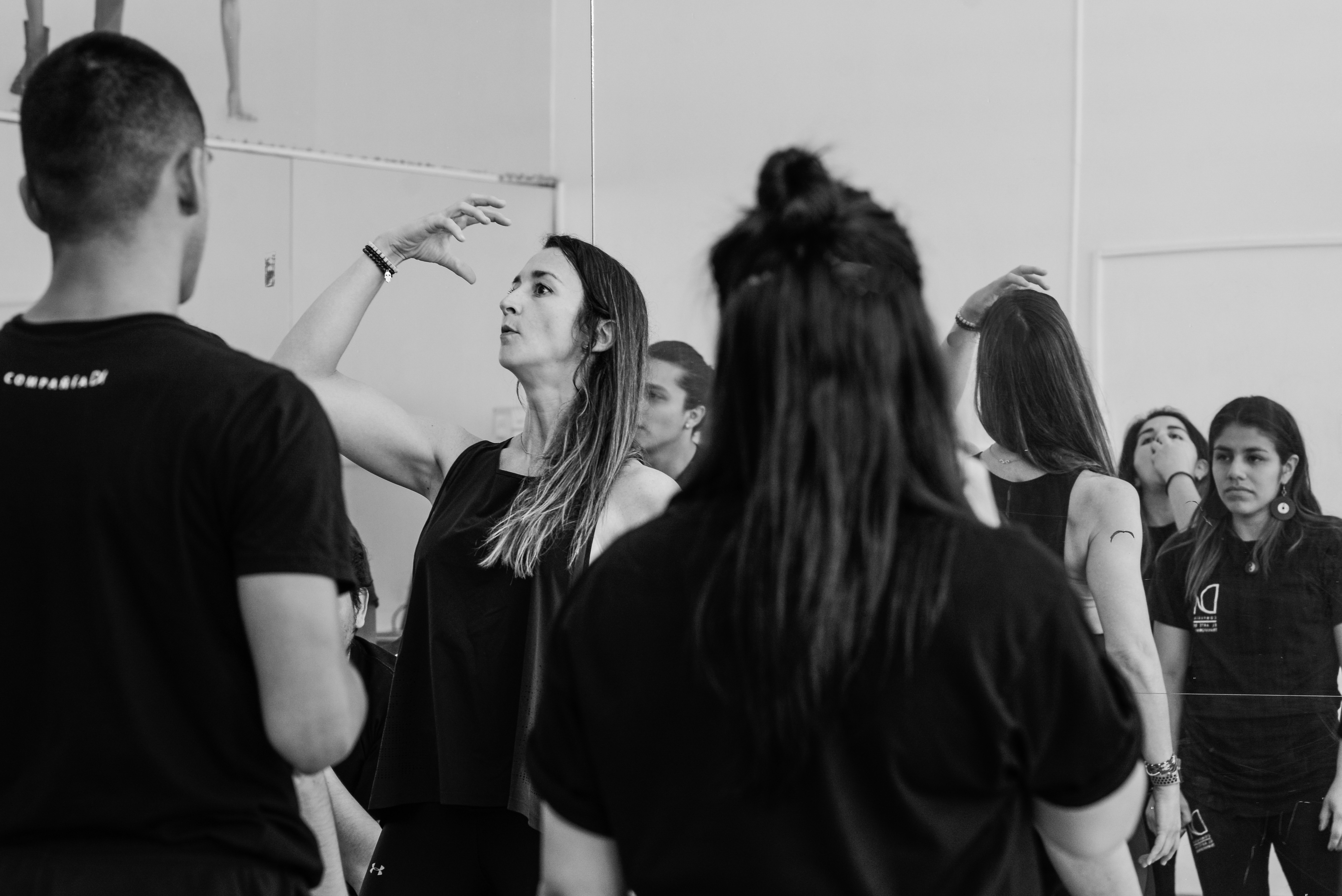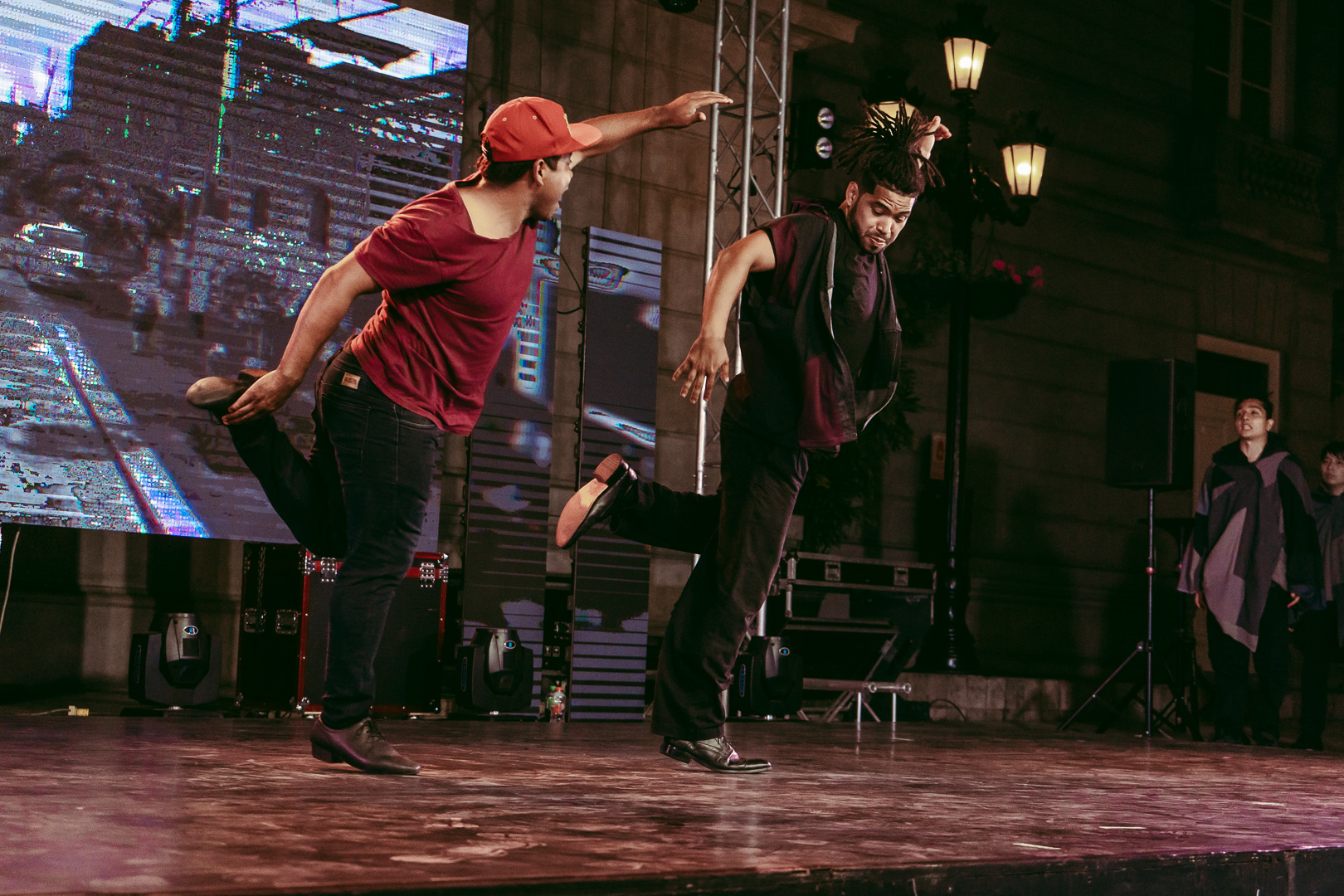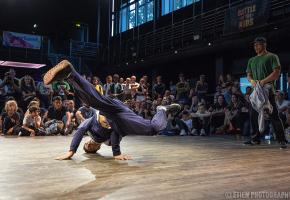In the old part of Miraflores, one of the wealthier neighbourhoods on the coast of Lima, I am led down to the basement of a modern building and into a small patio with natural light. There I wait to the sound of hiphop fused with Peruvian sounds, drifting out of the studio. I’ve come to meet Vania Masias, founder of D1, a Dance Company comprising of hip hop and contemporary dancers, many from the Lima barrios and shanty towns a world away from this neighbourhood we are in.
Vania is a former ballet dancer who was selected for the prestigious Prix de Lausanne award and performed with Teatro Municipal de Lima and Boston Ballet before moving into contemporary dance. She is famous in Peru, having also performed in a number of musicals as well as serving as director of choreography for Chicago and Mama Mia.
Slender, tall and very energetic, Vania emerges in a rush, and yet with the elegance and delicate posture typical of a classical ballerina. I’d seen her, perform on television and photgraphed in magazine, but her real life youthfulness and energy is both exhilarating and disarming.
Her original studio, Vania explains to me, is in Chorillos, a less polished part of Lima. “But in December I decided to rent this studio to access better funding for the project by providing break dancing and street dancing classes to wealthier people.” D1's dancers, she clarifies, are also teachers, both in this academy and in the barrios where they live and that way can make money in between performances. “Everyone thought I was crazy taking this risk after lockdown, with the country in the way it is, but I had no choice because we need to make money to survive.”

One senses that Vania, like most pioneers, has probably got used to being called crazy. She founded D1 in 2005, the first academy to provide professional training and opportunities to young street dancers from unprivileged areas.
The seeds, she says, began “while I was waiting at the traffic lights during my daily trips to the National Ballet Theatre in central Lima, where I was rehearsing. I would observe a group of boys performing acrobatic tumbles in order to get tips from drivers as a source of income. Being a dancer I knew how difficult it was to make those triple flips, and seeing how good they were, I was intrigued and approached them and asked how they had learned, where they trained, etc. They said they trained in the sand around their villages. Nobody taught them, they just practiced constantly out of a need for a creative outlet, an expression of freedom and a chance to survive.”
Vania decided to share her knowledge and apply the rigorous techniques and discipline of classical dance to street dance, break and hip hop. This was the beginning of an extraordinary journey; Vania had a dream for those young boys and, since then, her dream and their dreams have changed thousands of lives through her método (method), as she call it, using dance as a form self-development for kids. Needless to say, the road on which she embarked has been a bumpy one.
“Just imagine how difficult it is to communicate with your own teenager!” She says, implying that her task involved that challenge, but multiplied. Many of the kids who came to her academy had been involved in gang violence, had had family members murdered, been affected by drug addiction and suffered trauma of varying degrees. “I needed to know what these teenagers had in their heads and understand how a radical change was possible, so I decided to go back to studying, to find how to do this."
The difficulties led Vania to investigate further, to learn more about different stages of brain development, from childhood to adolescence, which resulted in a post-graduate degree in Neuroscience.
“I Iearned that, as well as the first three years of life, when the foundations for lifelong health and wellbeing are set, there is still a chance to reach children in the pre-teenage years when the development of a child's brain will centre on how to process language, literacy and creative arts, and intervene to make a lasting difference”
It is in this crucial period, explains Vania, where she felt she could make a positive impact through creative arts. Vania made it her mission to bring the benefits of dance and what she has learned from her studies of neuroscience to children suffering from trauma. She began taking her método to schools and younger children, but more importantly it’s the dancers themselves, now professional, who go back into the schools.
“Me going alone and doing workshops in schools was never going to make a great impact. The children will always see me as having had the privileges and opportunities that they don’t have. But the dancers who have grown up there and are now professional, they would have an impact, they can relate to the circumstances because they lived through them. They see through them a possibility.”

Seeing the success stories of many of her young pupils who left the streets and are now transforming the lives of others, has encouraged her to continue.
"It’s amazing for me to see they are leaders in their own community. I'm convinced that, supported by experience and science, this method works. It changes lives!”
Vania’s training as a classical ballet dancer, may have given her a delicate posture and discipline, but nothing prepared her for the hustle and grind of creating this institution.
“I’ve had to become a hard cookie to make my project successful” she admits.
This has not only meant developing talent from the harshest physical and emotional environments, but the even more impossible task of hustling and begging for money to fund the project in a country like Peru.
“Getting enough funding has been really challenging,” she says, perhaos not as challenging as living in the streets of Peru, but both require determination, guile, and a strong will. “We go and perform no matter where, I give talks, coaching, workshops, anywhere where they’ll pay us.”
Now, twenty years after she first began, together with producer Onélida,Mogollon and choreographers Shinichi & Atenas, Vania brings Peruvian Calle (street life) to London through music and dance.
“All of the kids performing come from the social programme. All of them have been through difficult circumstances, some have had family members killed before their eyes, they have all made this transition."
They have choreographed the reality they confront in their everyday lives in three stories. Each Dance tells a story, each dancer has their own story, lack of drinking water, everyday violence and lack of hope and opportunities are turned into a burst of energy, music and a show that gives hope.
This is the first time a Peruvian dance crew has performed at Sadlers Wells, and Vania is almost overwhelmed by the opportunity, having to have delve into her own pocket to bridge the funding gap necessary to prepare and take advantage of the trip. But the sacrifice is worth it, she says:
“For us taking D1 to Sadlers Wells is like going to the Mecca of modern dance, the home of the likes of Akram Kahn. And this break dance convention is the most important of its kind, so we’re having to rise to the challenge of being a world class dance group.”
You can see D1 perform at the 19th Breakin' Convention at Sadlers Wells from the 29th of April to the 1st of May. pre show workshops in the foyer of the theatre where you will also have a chance to meet the artists. Tickets here
















